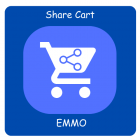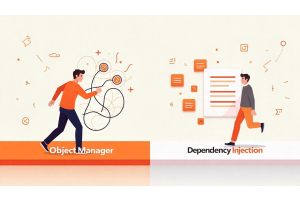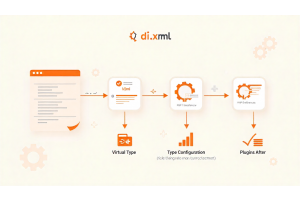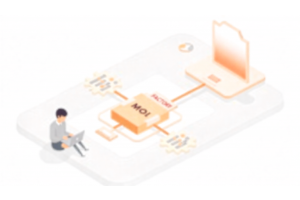How API Banking Powers the Future: BaaS Integration Explained

How API Banking Powers the Future: BaaS Integration Explained
Banking as a Service (BaaS) is fundamentally changing how people access financial products. Licensed banks now provide banking capabilities through non-bank companies using API banking technology. Companies without banking licenses can offer loans, accounts, payment processing, and cards directly through their platforms.
This shift matters because it meets customers where they already spend time. You don't need to visit a separate banking app when your favorite shopping platform handles everything.
Table Of Content
Understanding the BaaS Framework
BaaS connects three distinct players in the financial ecosystem. Non-bank brands seek to embed financial features into their core products. Technology platforms provide the API infrastructure and compliance tools that enable integration. Traditional banks supply the regulatory licenses and banking rails that make transactions legal and secure.
APIs power the technical backbone. Banks digitally transform their infrastructure to expose banking functions through secure APIs. Non-bank platforms connect to these APIs and deliver financial services through their existing interfaces. Users never leave the platform they're already using.
Common BaaS capabilities include checking and savings accounts, payment processing, card issuance, lending products, and customer verification systems. Each function connects through standardized API endpoints that handle authentication, transactions, and compliance automatically.
Tip
To enhance your eCommerce store’s performance with Magento, focus on optimizing site speed by utilizing Emmo themes and extensions. These tools are designed for efficiency, ensuring your website loads quickly and provides a smooth user experience. Start leveraging Emmo's powerful solutions today to boost customer satisfaction and drive sales!
Real-World BaaS Applications
E-commerce platforms now offer instant financing at checkout. Customers split purchases into installments without applying through a separate lender.
Gig economy apps provide same-day payment disbursements to workers. Drivers and freelancers access earnings immediately instead of waiting for weekly deposits.
Software companies embed business banking into their products. Accounting platforms now offer business checking accounts alongside bookkeeping tools.
Retailers launch branded payment cards. Customers earn rewards and manage spending within the retailer's app.
Healthcare providers integrate payment plans for medical services. Patients finance procedures directly through their provider's portal.
These use cases share a common pattern—financial services appear exactly when users need them, embedded in tools they already trust.
Market Growth Data
Current market expansion confirms BaaS adoption is accelerating rapidly. The BaaS market is expected to reach $24.58 billion in 2025 and grow at 19.68% annually to reach $60.35 billion by 2030.Some analysts project the market could exceed $116 billion by 2035.
Embedded finance specifically shows even more dramatic potential. Industry analysis suggests embedded finance programs could become a $7.2 trillion sector by 2030—more than double the combined value of the world's 30 largest banks.
| Metric | Current (2024–2025) | 2030 Forecast | Annual Growth |
|---|---|---|---|
| BaaS Market Value | $18–24B | $60–116B | 15–20% |
| Embedded Finance | Growing | $7.2T | 25%+ |
| Countries with Open Banking | 43 | 80+ expected | N/A |
| Average API Integration Time | 6–12 months | 2–4 months | Improving |
Regional adoption varies significantly. Europe and the UK lead with mature open banking frameworks. North America follows with increasing regulatory support. Asia-Pacific markets show the fastest growth rates as mobile-first populations embrace digital finance.
Why Traditional Banks Must Adopt BaaS
Customer behavior has fundamentally shifted. People now expect financial services to be seamlessly integrated into their daily activities — not confined to traditional banking apps. Research shows that users prefer managing their finances within the platforms they already use for shopping, transportation, or business operations.
Open banking regulations are accelerating this transition. As of Q1 2024, 43 countries are at various stages of adopting open finance regulation, according to Platformable’s report on Open Banking and Open Finance Regulations.
Three Core Components of BaaS Ecosystems
Non-Bank Brands (Distribution Partners)
These companies control customer relationships but lack banking licenses. They include retailers, software platforms, healthcare providers, transportation apps, and marketplace operators. Their motivation is clear—financial services increase customer lifetime value. A shopping app that offers credit generates more sales, while a freelance platform providing instant payouts improves worker retention.
Brands contribute user experience design, customer acquisition, and industry-specific expertise. They understand their users' needs better than traditional banks ever could.
Technology Providers (Infrastructure Layer)
These platforms build the middleware connecting banks to brands. They handle complex technical requirements including API management, security protocols, compliance monitoring, and transaction processing. Technology providers offer pre-built modules for common banking functions, dramatically reducing implementation time from years to months.
They also navigate regulatory complexity with built-in compliance tools that automatically adapt to changing regulations across jurisdictions.
Licensed Banks (Regulatory Foundation)
Traditional banks provide the regulatory licenses, capital reserves, and banking infrastructure that make BaaS legal. They process transactions, hold customer deposits, and ensure regulatory compliance. Banks handle risk management, fraud detection, and reporting—responsibilities that remain with the licensed institution regardless of service delivery methods.
Smart banks now view BaaS as infrastructure-as-a-service, becoming the “AWS of banking”—invisible to end users but essential to operations.
Technical Integration Process
Integration typically follows a standardized path. Banks expose their core systems through RESTful APIs, while technology providers wrap these APIs in developer-friendly interfaces with documentation, sandbox environments, and testing tools. Non-bank brands integrate using standard protocols, and authentication happens through OAuth or similar frameworks. Transactions flow securely through encrypted channels with real-time validation.
The entire stack includes multiple security layers: API gateways monitor traffic, tokenization protects sensitive data, two-factor authentication verifies users, and encryption secures data in transit and at rest. Modern implementations prioritize developer experience with clear documentation, sandbox testing, and real-time webhook updates.
Regulatory Considerations
BaaS operates under existing banking regulations despite its innovative delivery model. The licensed bank remains responsible for compliance regardless of how services reach customers.
Key regulatory areas include:
- Know Your Customer (KYC): All account holders must undergo identity verification that meets banking standards, even through partner interfaces.
- Anti-Money Laundering (AML): Continuous monitoring of transaction patterns ensures suspicious activity triggers proper investigation.
- Consumer Protection: Disclosure, dispute resolution, and error correction rules apply equally to embedded banking products.
- Data Privacy: GDPR, CCPA, and similar laws govern data collection, storage, and sharing with strict compliance requirements.
- Capital Requirements: Banks must maintain adequate reserves to meet fundamental safety standards.
Successful BaaS programs embed compliance within their technical architecture. Automated monitoring, real-time reporting, and built-in controls reduce regulatory risks while maintaining a seamless user experience.
Conclusion
BaaS represents the next evolution of financial services distribution. As regulatory frameworks mature and technology improves, expect embedded finance to become the default way people access banking products.Banks that embrace this shift position themselves as essential infrastructure providers. Those that resist face declining relevance as customers migrate to platforms offering seamless financial experiences.The question isn't whether to adopt BaaS—it's how quickly banks can transform their infrastructure to support it.
FAQs
What is API Banking?
API Banking allows banks and financial institutions to expose their services securely through Application Programming Interfaces (APIs), enabling third-party developers to build innovative financial products.
How does BaaS (Banking-as-a-Service) work?
BaaS platforms provide banking infrastructure through APIs, allowing non-banking companies to offer financial services like payments, lending, and accounts without holding a banking license themselves.
Why is API Banking important for modern finance?
API Banking enables faster innovation, seamless integration with fintech apps, improved customer experiences, and more agile financial services that adapt to market demands.
What are the key benefits of integrating BaaS via APIs?
Benefits include reduced operational costs, faster time-to-market, enhanced scalability, access to new revenue streams, and the ability to offer personalized financial products.
Which companies can leverage BaaS solutions?
Fintech startups, e-commerce platforms, payment providers, and even non-financial enterprises can leverage BaaS to integrate banking services into their products.
How secure is API Banking?
API Banking uses strict authentication protocols, encryption, and regulatory compliance measures to ensure data security and protect sensitive financial information.
What is the difference between traditional banking and API Banking?
Traditional banking relies on in-house systems and manual processes, while API Banking allows real-time, programmatic access to banking services, enabling faster and more flexible financial solutions.
Can BaaS integration improve customer experience?
Yes. BaaS enables seamless financial services within apps and platforms customers already use, providing convenience, personalization, and faster service delivery.
How do companies implement BaaS via API?
Companies integrate BaaS by connecting to a bank’s API endpoints, configuring authentication, mapping services like payments or accounts, and testing the workflows for reliability and compliance.
What is the future of API Banking and BaaS?
API Banking and BaaS are set to drive digital transformation in finance, enabling more embedded financial services, open banking ecosystems, and highly personalized financial products globally.









